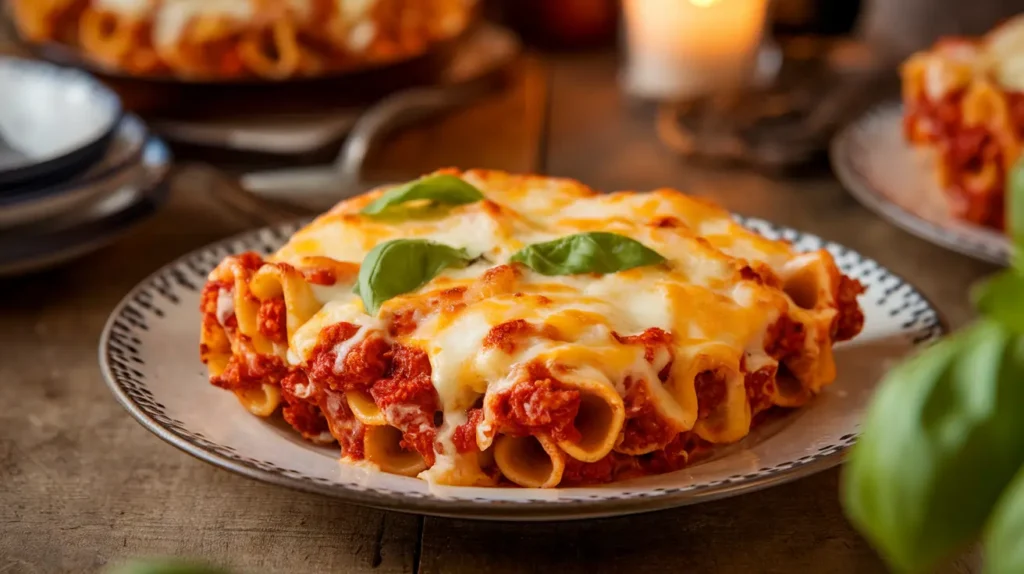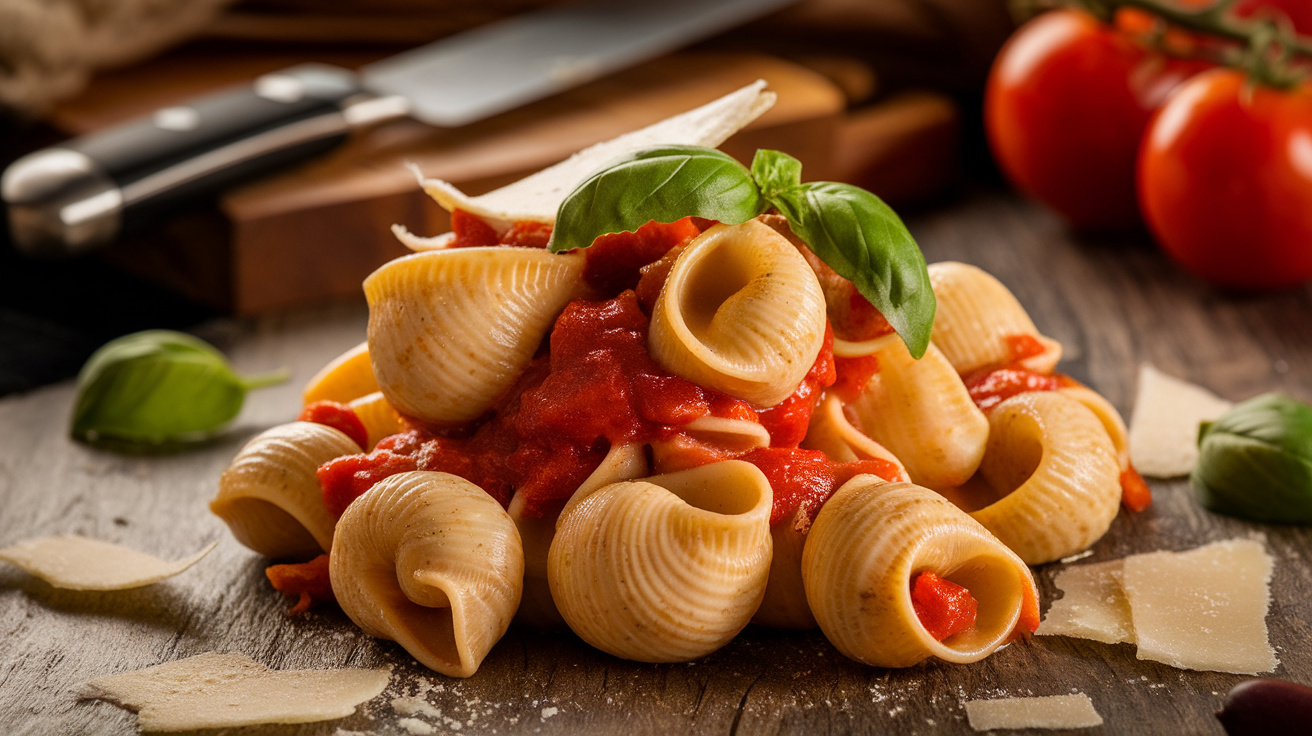Have you ever stumbled upon the word “lumache” and thought, “What on earth does that mean?” Well, you’re not alone! The term might sound fancy, but it’s deeply rooted in Italian culture, language, and cuisine. Buckle up because we’re about to dive into a fascinating journey through the world of lumache.
Table of Contents
Introduction to Lumache
First off, let’s clear the air. “Lumache” is the Italian word for snails. Yep, you read that right—snails! But before you start imagining slimy creatures crawling around, let me tell you that in the culinary world, lumache refers to much more than just the little garden dwellers. Many people wonder: what is the meaning of lumache? This fascinating term carries both culinary and cultural significance. It’s also the name of a delightful pasta shape that’s inspired by—wait for it—the snail’s shell.
“Lumache represents both the slow-paced beauty of nature and the artistic craftsmanship of Italian cuisine.”
Think of lumache as a two-for-one deal: it’s a word with double significance, making it a charming blend of gastronomy and nature. 🍝🐌
Exploring Its Unique Name and Meaning
Like most Italian words, “lumache” has a rich and fascinating history. When exploring what is the meaning of lumache, we find its roots in Latin, where it originally referred to snails. The word traces its roots to Latin, where “lumaca” originally referred to snails. Over time, it evolved into “lumache,” reflecting the plural form in Italian.
Snails have long been a part of Italian culture—not just in language but also in their culinary traditions. Ancient Romans were known to farm snails, considering them a delicacy. Can you imagine a Roman feast without snails? Probably not!
The pasta shape came much later, crafted to mimic the spiraled shells of snails. It’s as if Italian chefs decided to capture a piece of nature and turn it into a mouthwatering masterpiece.
Cultural Significance of Lumache
In Italy, lumache aren’t just a food item—they symbolize patience, resilience, and the art of savoring life. Snails are slow movers, right? Italians believe in embracing that same unhurried pace when it comes to cooking and enjoying meals. To truly understand what is the meaning of lumache, we must look beyond its literal definition and delve into its symbolic value in Italian culture.
“Lumache isn’t just a dish; it’s a celebration of life’s little moments, served on a plate.”
Plus, lumache dishes often grace tables during festivals and family gatherings. It’s like the Italian version of comfort food, connecting generations over hearty plates of pasta or stewed snails.
Lumache in Italian Cuisine

Now, let’s talk about the yummy side of lumache. If you’ve ever been to an authentic Italian restaurant, chances are you’ve seen lumache pasta on the menu. This unique pasta shape is designed to hold onto sauces like a champ. The ridges and hollow interior make every bite a flavor explosion.
Traditional Pasta Shapes Inspired by Nature
One classic dish is Lumache al Forno (baked lumache). Picture this: tender lumache pasta baked to perfection with a creamy tomato sauce, gooey cheese, and a sprinkle of fresh herbs. Sounds dreamy, doesn’t it? 😍
Another favorite is Lumache alla Sorrentina, where the pasta is tossed in a tangy tomato and basil sauce, topped with melted mozzarella. It’s simple, yet every bite feels like a hug from an Italian grandma.
Here’s a quick table outlining the ingredients for Lumache al Forno:
| Ingredient | Quantity |
|---|---|
| Lumache pasta | 250 grams |
| Tomato sauce | 2 cups |
| Mozzarella cheese | 1 cup (shredded) |
| Parmesan cheese | ½ cup (grated) |
| Fresh basil | Handful (chopped) |
| Garlic | 2 cloves (minced) |
| Olive oil | 2 tablespoons |
| Salt and pepper | To taste |
Cooking with lumache pasta feels like painting on a culinary canvas—every ingredient adds a splash of color and flavor. 🎨🍅
Recipes to Savor the Flavor
Did you know lumache pasta comes in slightly different shapes? While the classic version resembles a snail shell, there are also smaller and larger variations. The diversity in size makes it versatile for different recipes, from hearty casseroles to light pasta salads.
Key Ingredients Used in Lumache Dishes
When it comes to lumache, the ingredients are often simple yet incredibly flavorful. Italian cuisine is all about letting each component shine. Think tomatoes bursting with sweetness, freshly grated cheese, and aromatic herbs like basil and oregano.
Pro Tip: Always pair lumache pasta with sauces that are thick and creamy or rich in texture. It’s like finding the perfect dance partner—they just click! 💃🕺
Here’s the second part of the article. Let’s keep the momentum going!
The Symbolism of Lumache in Italian Culture
Did you know that lumache aren’t just about food? They’re also a powerful symbol in Italian culture. Think about it: snails move slowly, taking their time, and Italians have a similar philosophy when it comes to enjoying life. It’s all about savoring the moment, whether that’s a meal, a conversation, or just a sunny afternoon.
In some regions of Italy, lumache are even associated with good luck and prosperity. During festivals, you might find stewed snails being served as a reminder of nature’s abundance and the importance of patience.
“Eating lumache isn’t just filling your belly—it’s a nod to the idea that good things come to those who wait.”
So, the next time you spot lumache on a menu, remember it’s more than just food—it’s a slice of Italian philosophy served on a plate.
Cooking Challenges and Solutions
Let’s face it: cooking pasta sounds simple, but getting it just right can sometimes feel like cracking a secret code. If you’ve ever tried cooking lumache pasta and struggled, you may still be asking yourself, what is the meaning of lumache in terms of its culinary versatility? Lumache pasta, with its unique shape, can be a little tricky to master. But don’t worry—I’ve got your back!
Overcooking or Undercooking Issues
One common problem is overcooking lumache pasta. Because of its shell-like shape, it takes slightly longer to cook compared to other pasta types. Overcook it, and you’re left with mushy pasta that loses its charm. Undercook it, and you’ll feel like you’re chewing rubber.
💡 Solution:
- Always check the cooking time on the package.
- Test a piece a minute or two before the timer goes off—it should be al dente, meaning firm to the bite.
- Drain the pasta immediately and toss it with your sauce to stop the cooking process.
Choosing the Right Sauce for Lumache
Another challenge is picking a sauce that complements lumache pasta. Its hollow center and ridged surface mean it works best with thick, chunky sauces.
“Pairing the wrong sauce with lumache is like wearing sandals in the snow—it just doesn’t work.”
💡 Solution:
- Go for sauces like bolognese, creamy Alfredo, or hearty vegetable-based sauces.
- Avoid thin, watery sauces—they’ll slide right off and leave your pasta bland.
Tips for Perfectly Al Dente Lumache Pasta
Getting that perfect al dente texture might sound like a fancy chef’s trick, but trust me, it’s easier than you think.
💡 Pro Tips:
- Use a big pot with plenty of water. Lumache pasta needs room to move around.
- Salt the water generously—it should taste like the sea.
- Don’t rinse the pasta after draining. The starch helps the sauce cling to the pasta, making each bite a flavor bomb. 💣
Modern Takes on Lumache

Lumache might have its roots in traditional Italian cuisine, but that doesn’t mean it can’t get a modern makeover. For anyone curious about what is the meaning of lumache, fusion recipes showcase how this pasta can adapt to diverse cuisines. Chefs around the world are giving this classic pasta a contemporary twist, blending global flavors and innovative cooking techniques.
Fusion Recipes Incorporating Lumache
How about Lumache Tikka Masala? This dish combines the comforting creaminess of Indian tikka masala with the satisfying chew of lumache pasta. It’s like two worlds colliding in the most delicious way possible.
Or maybe try Lumache Stir-Fry? Toss the pasta with soy sauce, sesame oil, and stir-fried veggies for an Asian-inspired dish that’s quick, easy, and oh-so-tasty.
Vegan and Gluten-Free Lumache Recipes
Good news for those with dietary restrictions—lumache can still be your go-to pasta! There are plenty of gluten-free versions available, made with ingredients like rice flour or quinoa.
For vegans, swap out the traditional cheese and cream sauces for plant-based alternatives. A rich cashew cream sauce or a zesty tomato-basil blend works beautifully with lumache pasta. 🌱
Where to Buy Lumache and Related Ingredients
Ready to try cooking with lumache but don’t know where to find it? Don’t worry; you’re not alone. Let’s break down your options.
Popular Brands and Stores Offering Lumache
Most Italian specialty stores stock lumache pasta, but you can also find it online. Brands like Barilla and De Cecco often include lumache in their product lineups. Just a quick search, and you’re good to go!
How to Identify High-Quality Lumache Pasta
Not all pasta is created equal. To make sure you’re getting the best lumache, look for these clues:
- The pasta should have a rough surface. This helps the sauce stick better.
- High-quality lumache is often made with durum wheat semolina. Check the ingredients list!
- Opt for bronze-cut pasta if possible—it has a superior texture and taste.
Lumache Beyond Food: Other Meanings and Uses
While lumache is most famously tied to food, it has other meanings that might surprise you.
Snails as “Lumache” in Nature
In Italian, “lumache” primarily refers to snails, those little creatures known for their slow pace and spiral-shaped shells. They’re a common sight in gardens and forests and are often associated with rain.
Did you know snails are actually a delicacy in some parts of Italy? Escargot-style dishes are popular, especially in regions like Liguria. These dishes, while not for everyone, showcase the resourcefulness of Italian cuisine, turning even the humblest of creatures into a gourmet experience.
How the Term Is Used Metaphorically in Italy
In everyday Italian conversations, “lumache” is sometimes used as a metaphor. For example, calling someone a “lumaca” might jokingly imply they’re moving too slowly. It’s the Italian equivalent of telling someone to “speed it up!”
“Lumache isn’t just a word—it’s a reminder to embrace life’s pace, whether it’s slow or fast.”
While exploring the intricate details of lumache pasta, readers might also enjoy diving into Lumache Pasta: A Comprehensive Guide to discover more about its history, cooking tips, and pairing suggestions. For those interested in understanding broader culinary topics, the article Exploring the Delights of Bavette Steak offers insights into another unique Italian-inspired dish, creating a flavorful journey across Italian cuisine. Additionally, curious cooks experimenting with lumache could find useful inspiration in the guide The Ultimate Guide to Making Perfect Mini Pancakes, which blends creativity and technique for delicious results.
Conclusion: The Unique Charm of Lumache
So, what’s the real meaning of lumache? It’s more than just a word for snails or a type of pasta. It’s a glimpse into Italian culture, a symbol of patience, and a culinary delight that brings people together. Ultimately, what is the meaning of lumache comes down to more than just snails or pasta—it’s a celebration of patience, flavor, and tradition.
Whether you’re twirling lumache pasta on your fork or learning to appreciate the beauty of slow moments, this word invites you to see life through a richer, more flavorful lens.
“The next time you enjoy a dish of lumache, remember—you’re not just eating pasta. You’re savoring a tradition, a story, and a little slice of Italian heritage.”
Nutrition Facts Table for Lumache Pasta
If you’re curious about the nutritional profile of lumache pasta, here’s a handy breakdown:
| Nutrient | Per 100g Serving |
|---|---|
| Calories | 350 kcal |
| Protein | 12 g |
| Carbohydrates | 72 g |
| Fiber | 3 g |
| Fat | 1.5 g |
| Saturated Fat | 0.2 g |
| Sodium | 5 mg |
Now that you’ve learned all about lumache, it’s time to explore it in your own kitchen. Grab some lumache pasta, whip up a rich sauce, and enjoy a taste of Italy right at home. Buon appetito! 🍝

